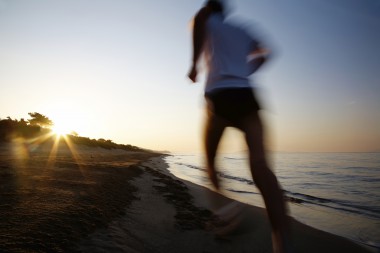Unfortunately, many don’t think about the safety issues surrounding this pumpkin carving season! In addition, turkey carving for Thanksgiving or Christmas also is right around the corner and carries similar risk. As a hand surgeon, I am too often reminded of the lasting effects of quick slip of the knife during the Halloween and holiday season.
Then, there is the clean-up afterward with all the glass in the sink – who hasn’t broken a glass washing dishes after an event. There are too many important tendons, nerves, vessels, ligaments, and bones in your and your families hands that you’ll want to keep around for a long time!
Here are a few tips that can improve safety and provide an important opportunity to create safe handling habits around sharp objects.
- The first and most important step is to simply think about safety when using knives and when around sharp objects. I can’t tell you how many times patients come in with severe damage and describe an incident where their mind was thinking about other things. These injuries are common! If they haven’t happened to you or someone you know, you’re lucky.
- Do not cut toward your free hand or towards your body. Knives slip – know where it will go if it slips. Place your free hand opposite of where the knife is going.
- Keep knife handles dry. Pumpkin contents are slippery!
- The sun is not out much these days. However, that’s no excuse for a poorly lit environment – always do your holiday carving in well lit environments.
- Keep your knives sharp. This decreases the force needed to cut through an object. Don’t be fooled – dull knives do as much if not more damage when they come in contact with your hands.
- Use extreme caution with knives around children. There are many ways to participate – scooping out the pumpkin, drawing the designs. If you must have them participate, consider commercially available pumpkin carving kits which have specially designed knives which attempt to decrease injury.
Finally, if you do have an cut to your hand, place pressure on the injury and keep the arm elevated. Here are a few signs that you should seek additional help:
- The bleeding doesn’t stop after 15 minutes of holding constant pressure.
- You experience persistent numbness in your finger.
- You are unable to flex or extend your finger.
- The wound is contaminated or too large to close on its own.
If you have questions, you can always call our clinic at 206-633-8100 or respond to this blog. I will try to be prompt is my reply! If you have an emergency, don’t hesitate to call 911 or drive to your local emergency room.


 By
By  Last month, many watched Green Bay Packers star Charles Woodson sustain an injury that forced him onto the sidelines of the biggest football game of the year – Super Bowl XLV. During a fairly routine defensive play in the second quarter, Woodson, a cornerback for the Packers, dove onto the ground, landed on his right shoulder, and fractured his collarbone.
Last month, many watched Green Bay Packers star Charles Woodson sustain an injury that forced him onto the sidelines of the biggest football game of the year – Super Bowl XLV. During a fairly routine defensive play in the second quarter, Woodson, a cornerback for the Packers, dove onto the ground, landed on his right shoulder, and fractured his collarbone.